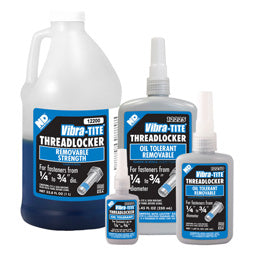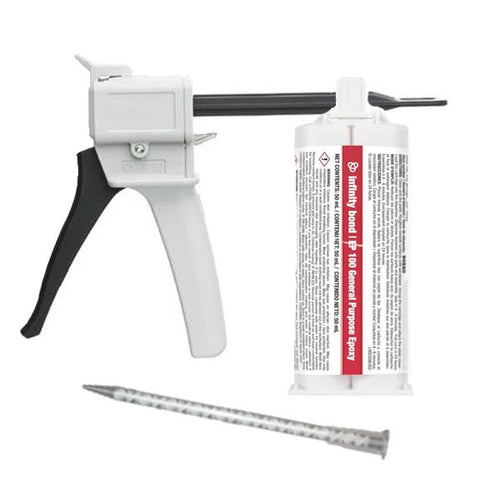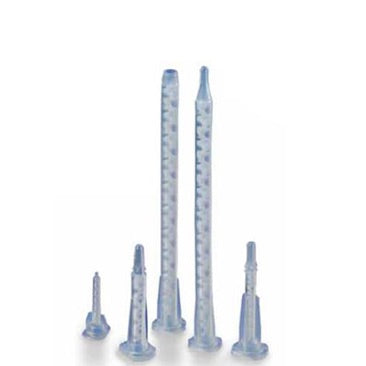Brass Adhesives
Brass is a metal alloy comprised of mostly copper and zinc that can be made in different proportions to get different properties. Brass is known for being malleable and having good corrosion resistance. It is also durable with antibacterial properties, low friction, and good thermal conductivity. Because of these qualities, brass is widely used in everything from musical instruments to hospital equipment.
Brass can be bonded together through brazing, soldering, or gluing. Compared to some other types of materials, bonding brass with an adhesive is relatively easy when you use the right metal adhesive and apply it according to the manufacturer's instructions.
Adhesives for Brass
We have been in the adhesives industry for over fifty years and have seen several bonding applications involving brass. As a result, our team of experts is sharing a few brass adhesives to make finding the right bonding solution a little easier.
-
![Loctite 272 High Temperature High Strength Red Threadlocker 50ml Bottle]()
Loctite 272 High Temp Threadlocker
This threadlocker adhesive is a high-strength adhesive commonly used to lock and seal bolts or studs. It has a high temperature resistance and medium viscosity. When bonding brass, the fixture time is 5 minutes.
-
![Infinity Bond EP 420 High Peel and Shear Strength Epoxy - 25 Minute Open Time]()
Infinity Bond EP 420
This toughened epoxy comes in a 2:1 ratio. With its high impact and shock resistance, it is designed to create strong bonds in challenging environments. It has a slow set time to allow for adjustments during application.
Types of Brass
Because brass is an alloy, it can have numerous compositions and applications. These combinations are almost endless, but some notable types of brass include:
- Alpha Brass- Made of a higher proportion of copper and lower proportion of zinc, alpha brass is often used for decorative applications.
- Alpha-Beta Brass- A two-phase alloy, this brass has slightly more copper than zinc. It is often used in gears, fittings, and valves.
- Beta Brass- Beta brass is strong and hard. It has a higher composition of zinc and lower composition of copper. It is often used in faucet handles, door fittings, and other fixtures.
- Yellow Brass- Yellow brass has a higher zinc content and lower copper content and can commonly be found in construction, electrical, and plumbing applications.
- Red Brass- Red brass is an alloy made of copper, zinc, and tin. You often find it in a wide variety of commercial water pipe applications.
Because there are so many different types of brass with different makeups, there are also a diverse number of applications for this metal. These different applications and types may have slightly different bonding requirements, so be sure the brass adhesive you choose is compatible with your needs.
The Different Types of Glue for Brass
There are a wide range of products that can successfully glue brass. Some common types of adhesives for brass include:
- Cyanoacrylates- Cyanoacrylates or supers glues react with water in the air and cure almost instantly to create strong bonds.
- Acrylics- Acrylic adhesives are often used to bond metals like brass and can have a diverse number of different properties.
- MMAs- Methyl methacrylate adhesives (MMAs) require minimal surface preparation and typically cure in a few minutes or hours.
- Epoxy- Epoxy adhesives are usually two-part adhesives that often have longer cure times. They may be able to create some of the strongest bonds to brass.
Of course, bonding capabilities will be slightly different depending on the product. Always check the technical datasheet or you can contact one of our adhesive experts for more help.
Surface Preparation to Glue Brass
Like with gluing other types of metal, brass often requires a certain amount of surface preparation before applying the adhesive. The following steps are usually recommended:
- Cleaning/Degreasing- The first step is usually to clean the brass to remove any dirt, dust, grease, or other debris that could interfere with the adhesive's ability to adhere to the surface. This process may involve vapor degreasing or solvent baths.
- Abrasion- Abrading the surface through any number of different mechanical methods helps to remove any lasting debris as well as give the adhesive more to grab on to for a stronger bond.
- Cleaning- Abrasion can lead to loose brass particles collecting on the surface, so another round of cleaning is recommended to remove them.
- Drying- The brass should be completely dry before the adhesive is applied.
That being said, different brass glues may require slightly different surface preparation. Always follow the instructions outlined by the manufacturer for the optimum results.
Other Tips for Working with Brass Substrates
Besides just doing the right surface preparation, there are other factors to consider when working with brass and brass adhesives. Below are a few tips on gluing brass substrates to make your life a little easier.
- Allow the adhesive to cure as recommended for best results.
- Follow proper safety procedures such as wearing protective clothing and working in a safe environment.
- Test the product on a sample first.
- Store the adhesive according to the manufacturer's suggestion to increase its shelf life and decrease the chances of wasted product.
- Many adhesives for brass have similar chemical makeups, so consider a low-cost alternative to the more expensive, well-known brands.
- Besides just the material being bonded, you should take into account the environment, production process, and any special bonding requirements when selecting a brass glue.
Need More Guidance?
There are a wide range of adhesives for brass on the market with different properties, set times, and costs. To help you find the right product for your needs, our team is not only able to answer questions but also provide you with product recommendations. Contact us now for help.
Related Products
Frequently Asked Questions
Yes, there are super glues you can use on brass. Some products may even be formulated specifically with super glue in mind. If you have an industrial application, make sure you choose an industrial-grade super glue as the glue you get at the craft store will likely not hold up.
Ask a Question
Have questions? Our team of adhesive experts can help. Submit your questions and we'll get you answers right away. We're here to help.












